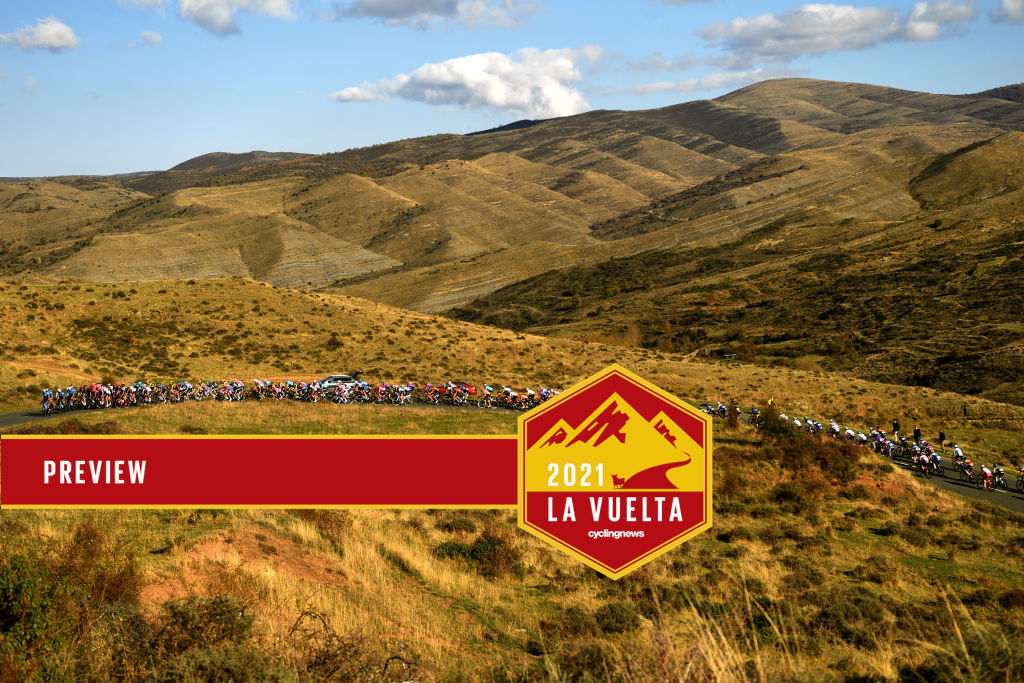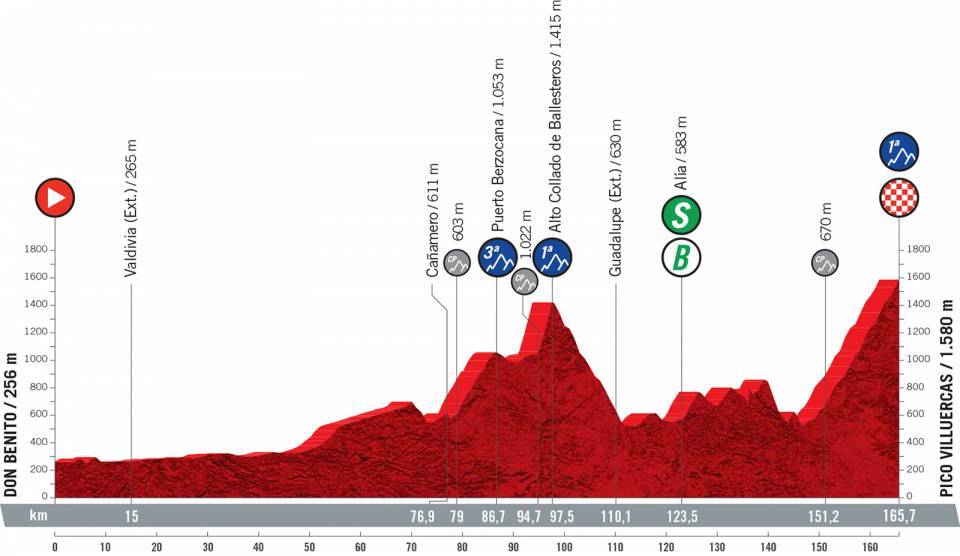Into the unknown as Vuelta a España tackles new summit finish at Pico Villuercas - Preview
Vuelta confronts unprecedented mammoth climb in western Spain

From the Angliru in 1999 through to Calar Alto in 2004, the Sierra de Pandera in 2006, the Puerto de Machucos in 2017, one of the modern-day Vuelta a España’s best-known trademarks is its capacity to discover new, brutally difficult, summit finishes inside Spain.
But if the toughest, new giant, climbing finale, the Alto de Gamoniteiru in this year’s third week is keenly anticipated by Vuelta fans, the unprecedented final ascent of the 14.7km Pico de Villuercas this Saturday on stage 14 should not be underestimated, either. Especially as it will be tackled not once, but twice.
First featuring half-way through the stage and then again the end of a day containing 3,500 metres of vertical climbing on a relatively short but intense 166.7-kilometre mountain track, the first ascent of Pico Villuercas will be up its side known as the Collado de Ballesteros.
This initial ascent, also ranked first category, is scarily difficult: it contains three kilometres of cement trackway, with ramps of up to 15 per cent. As race co-designer, Fernando Escartin told Cyclingnews back in February, “it’d be the perfect opportunity for someone to launch a long-distance attack.
“There’s a lot of tough little roads immediately afterwards, so it’d be extremely difficult to chase down that kind of move. Particularly when we’re finishing with a second ascent of the same Villuercas climb, even if it’s not as difficult,” Escartin said.
Quite apart from the novelty of tackling Villuercas twice, this is the first time too in the Vuelta’s 86-year history that the race will have a summit finish in Spain’s little-known, deeply rural westerly region of Extremadura.
“I raced up Villuercas during the Vuelta a Extremadura, an amateur race, when it was the finish for an uphill time trial,” Santi Blanco, a multiple Vuelta stage winner, tells Cyclingnews, “and although I didn’t win I did well, and I can remember it’s really tricky.”
The latest race content, interviews, features, reviews and expert buying guides, direct to your inbox!
Averaging 6.2 per cent, the second ascent of Villuercas, apart from the very top, is the same climb the riders will have used to come off the mountain range before looping back round for the finish. As they’ll have seen, the roads are challenging, but nothing like as steep or technical as the mid-stage Collado de Ballesteros.
“The start, coming out of the town of Guadalupe, isn’t too hard,” says Blanco “But the key thing to remember is that you’ve got to attack sooner rather than later, because the middle section, with chunks of around 10 per cent is where its most consistently difficult.
“Then it gets really exposed at the top and although it’s much steeper, 15 per cent or so, there are often headwinds. It’ll make it too difficult to get away later and people will start following wheels rather than attacking."

Pico de Villuercas does not have the same kind of narrow, badly-surfaced, former cow herders tracks that make the climbs like Gamoniteiru or Machucos so hard.
Rather it is smoothly tarmacked to the top, and although narrowing down from broad highway to country lane after a couple of kilometres, all the way to the telephone antennae standing sihouetted against the skyline at the summit, there are no excessively tough or poorly tarmacked sections.
“But it comes after that really difficult start to the sage,” points out Blanco, “and then it’s got something that none of the Asturian climbs normally have: heat.” The temperatures here are likely to be in the mid-30s, as they have all week. As Blanco says, “Anybody who suffers in these sorts of temperatures will find this a really difficult day.”
In terms of the overall battle, Blanco says that “it could be that the GC guys will play things conservatively, thinking about what’s to come in the third week. But this climb has everything going for it to open up gaps if people want.”
It shouldn’t be forgotten, either, that the Villuercas stage is only the first half of a tough weekend of mountain climbing.
Sunday’s stage 15 through the sierras of Avila does not end with a summit finish, but the two first-category ascents and fast drop off to El Barraco, home of the late climbing great, Jose María Jiménez, represent a second big chance for the GC favourites to try their luck, if they are feeling motivated.
“Sunday is the kind of stage where somebody like Adam Yates or Egan Bernal [Ineos Grenadiers], who are on the outer limits of the GC battle, could push hard to make a difference,” Blanco says. “Or for a team to try something long-distance.
“But first, in any case, they’ve got to get through Saturday, and that’s easier said than done. Villuercas won’t likely be a definitive test for the climbers in this year’s Vuelta like the Gamoniteiru. But it’ll still be important.”
Alasdair Fotheringham has been reporting on cycling since 1991. He has covered every Tour de France since 1992 bar one, as well as numerous other bike races of all shapes and sizes, ranging from the Olympic Games in 2008 to the now sadly defunct Subida a Urkiola hill climb in Spain. As well as working for Cyclingnews, he has also written for The Independent, The Guardian, ProCycling, The Express and Reuters.
